RP8 - Investigation into the effect of a named factor on the rate of dehydrogenase activity in extracts of chloroplasts.
1/13
There's no tags or description
Looks like no tags are added yet.
Name | Mastery | Learn | Test | Matching | Spaced |
|---|
No study sessions yet.
14 Terms
Describe the role of the enzyme dehydrogenase in photosynthesis (2)
- The enzyme dehydrogenase is crucial to the light dependent reaction, where it catalyses the reduction of NADP
- NADP accepts electrons from photoionisation of chlorophyll.
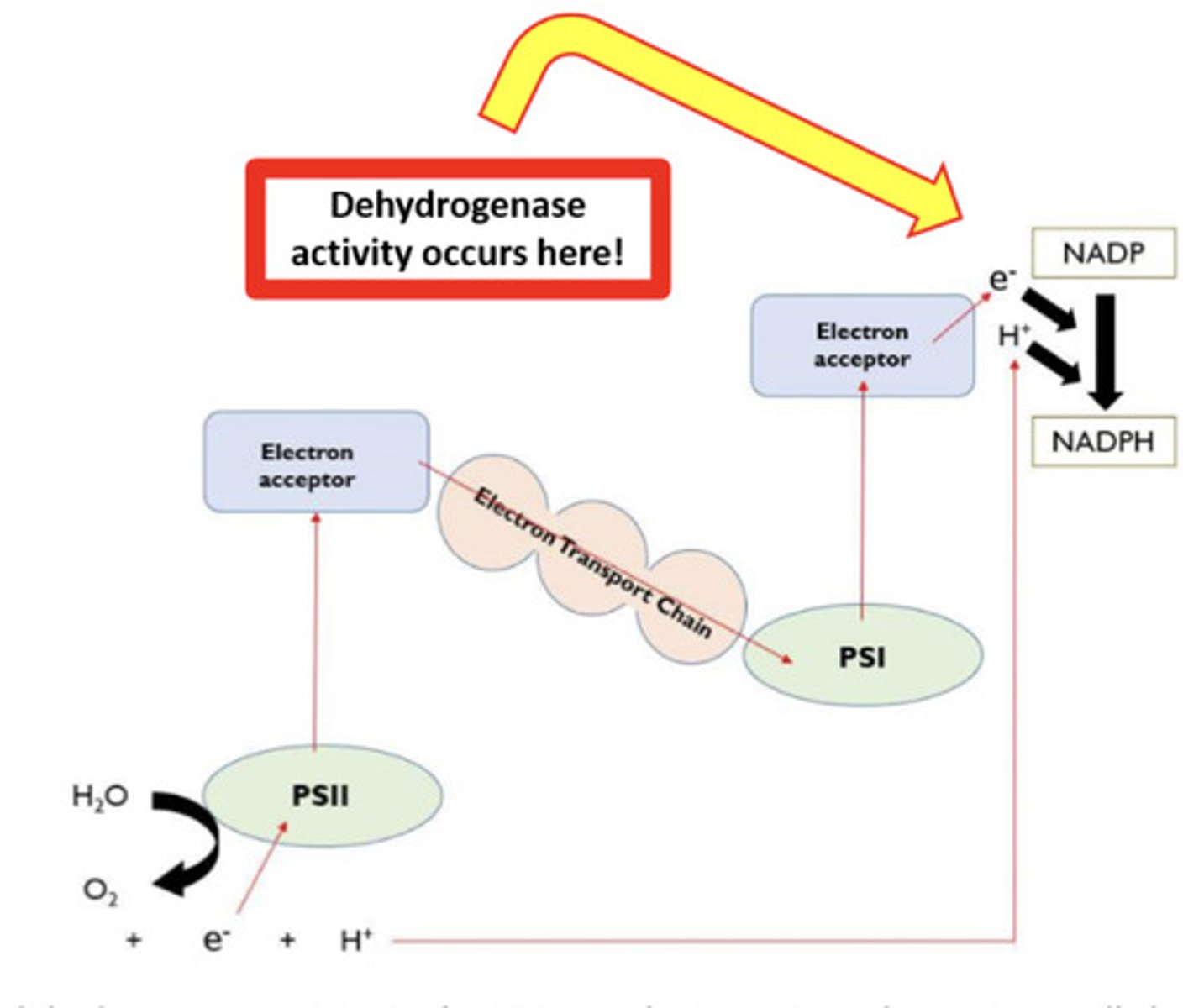
what is DCPIP? what is its role in this experiment?
- redox indicator dye (blue to
colourless when reduced)
- will accept electrons instead of NADP and be reduced
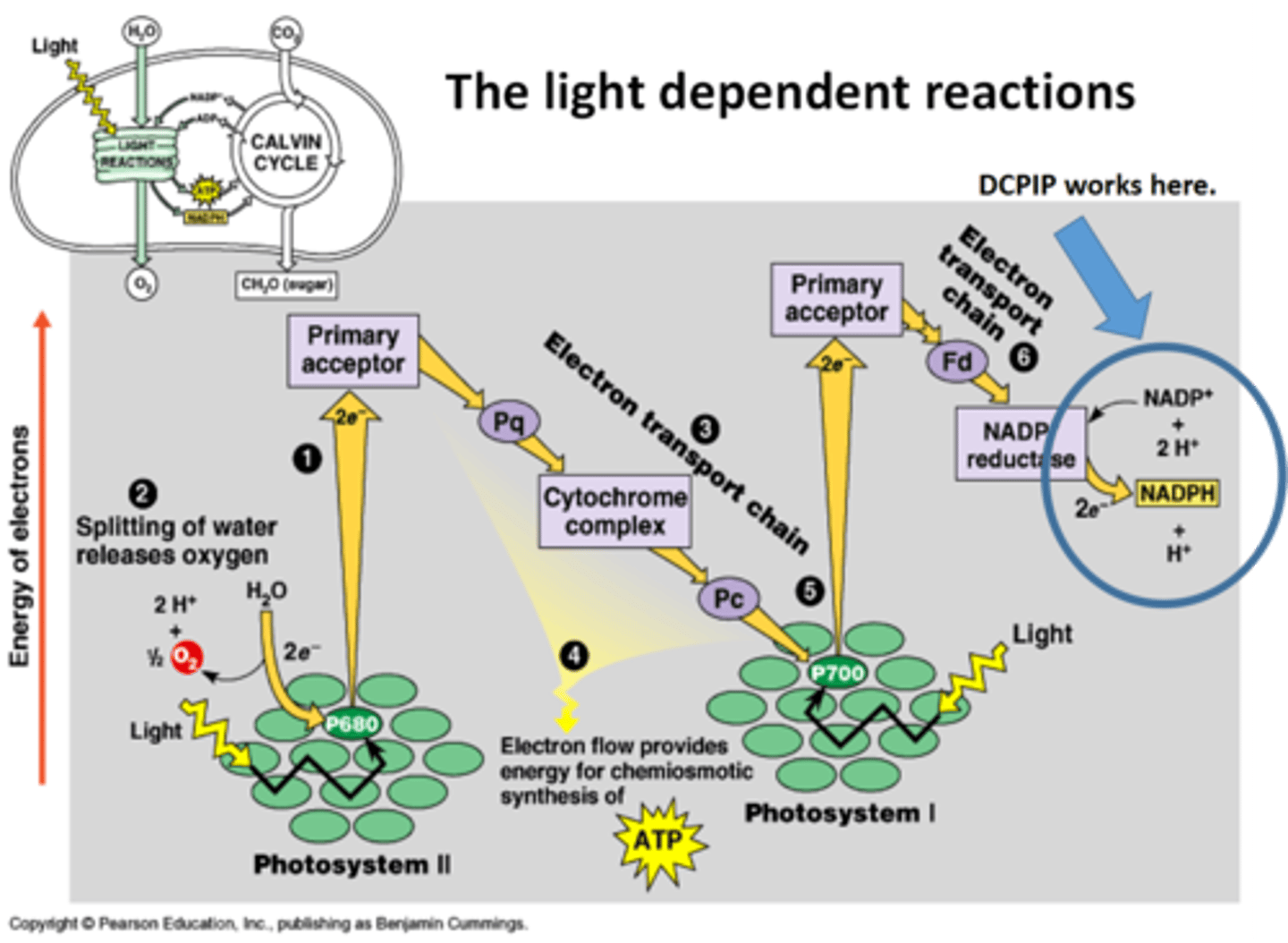
describe the relationship between dehydrogenase activity and DCPIP
the higher the rate of dehydrogenase activity, the greater the rate of electron flow along the ETC so the greater the rate of reduction of DCPIP, so the faster the colour change from blue to colourless
Describe how rate of dehydrogenase activity in extracts of chloroplasts can be measured
1. Extract chloroplasts from a leaf sample using cell fractionation.
2. Set up test tubes as follows: A. Control 1 - set volume of DCPIP (redox indicator dye, electron acceptor), water and chloroplasts in isolation medium, covered in foil to block light
B. Control 2 - set volume of DCPIP, water and isolation medium without chloroplasts C. Standard - set volume of water and chloroplasts in isolation medium, without DCPIP
D. Experiment - set volume of DCPIP, water and chloroplasts in isolation medium
3. Shine light on test tubes and time how long to it takes for DCPIP to turn from blue (oxidised) to colourless (reduced) in tube D
- tube A and B should show no change
- Compare to a colour standard (tube C) to identify end point
4. Rate of dehydrogenase activity (s -1 ) = 1 / time taken
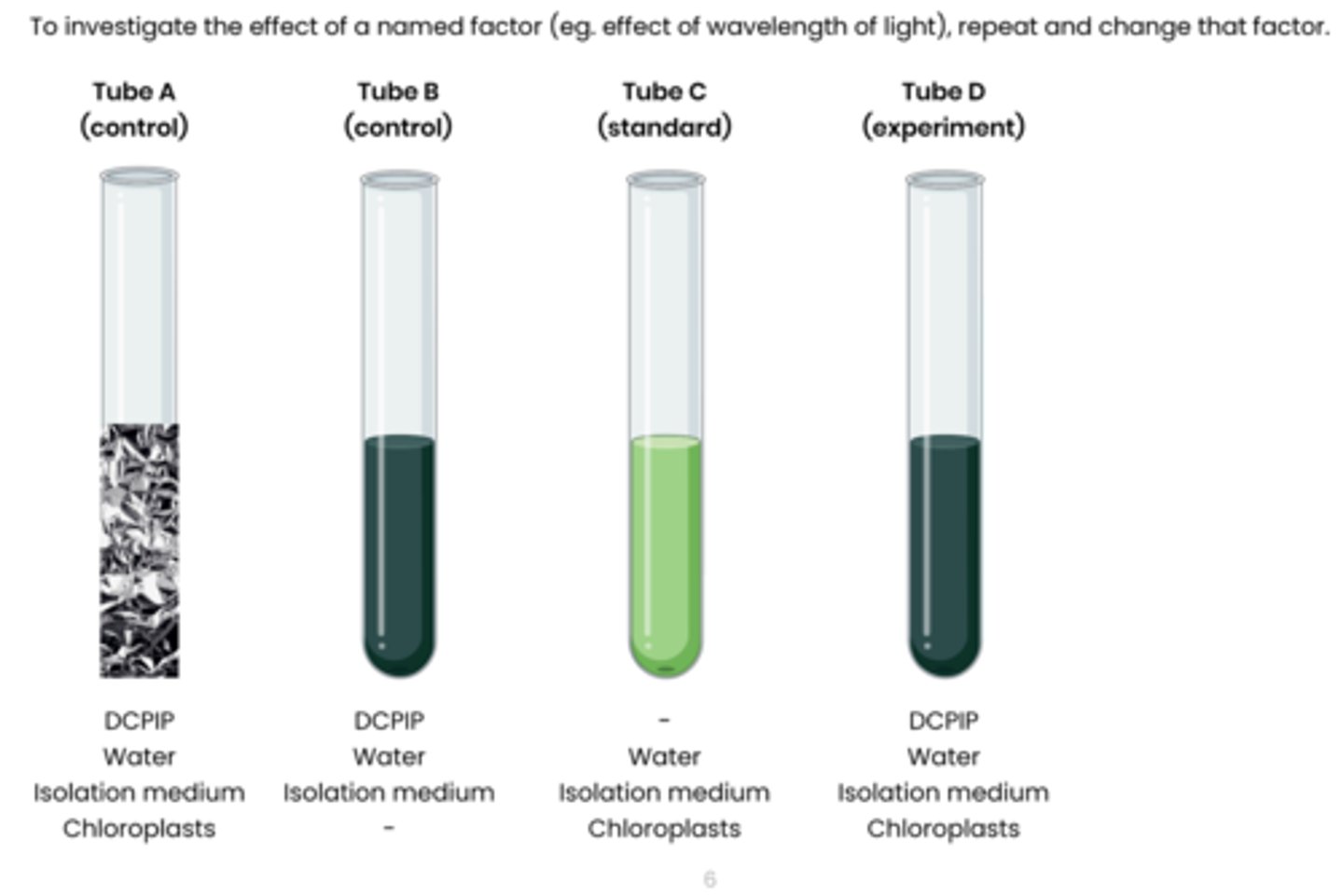
What variables should be controlled?
● Source of chloroplasts
● Volume of chloroplast suspension
● Volume / concentration of DCPIP
Explain the purpose of control 1 (tube A).
● Shows light is required for DCPIP to decolourise
● Shows that chloroplasts alone do not cause DCPIP to decolourise
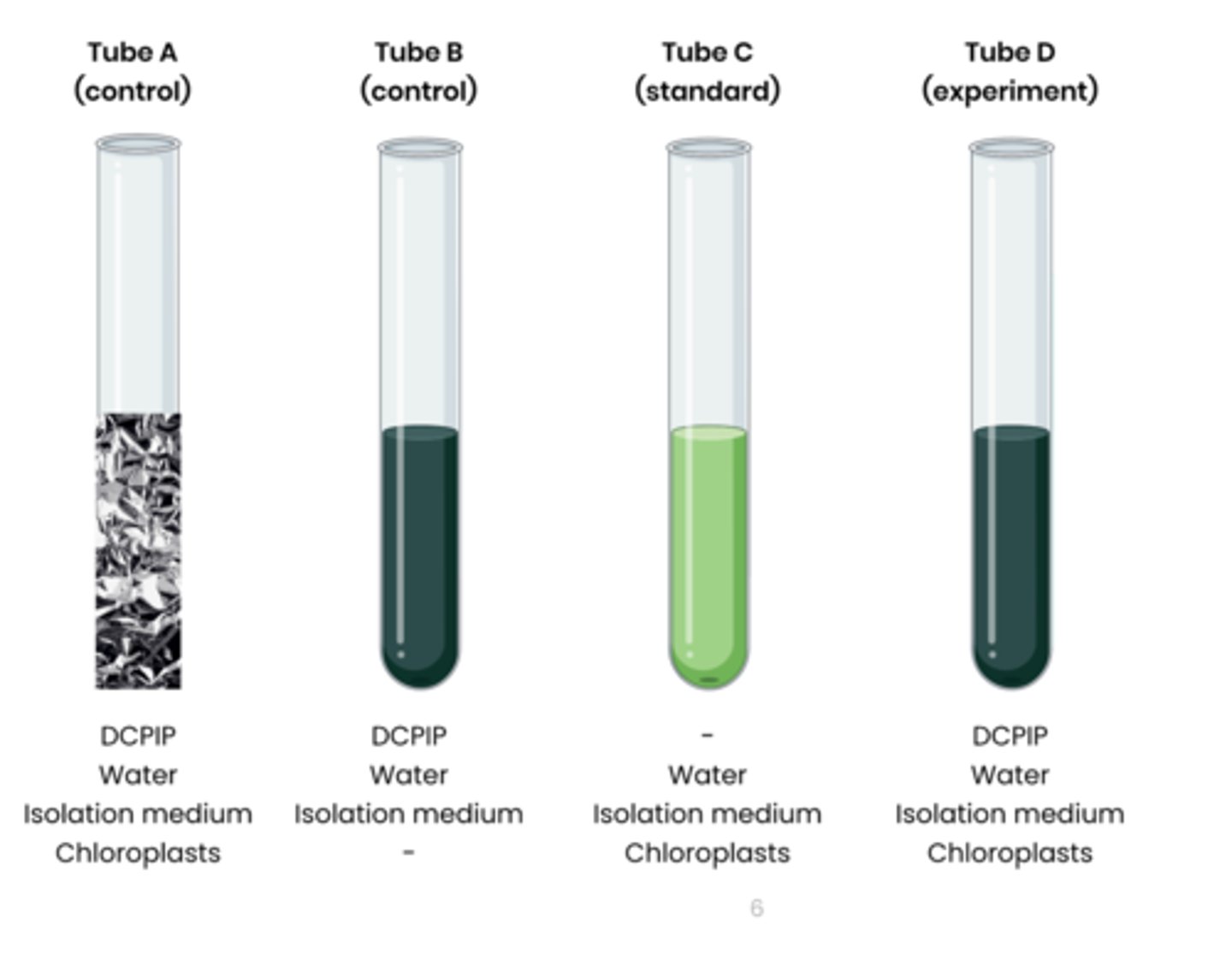
Explain why DCPIP in control 1 stays blue.
● No light so no photoionisation of chlorophyll
● So no electrons released to reduce DCPIP
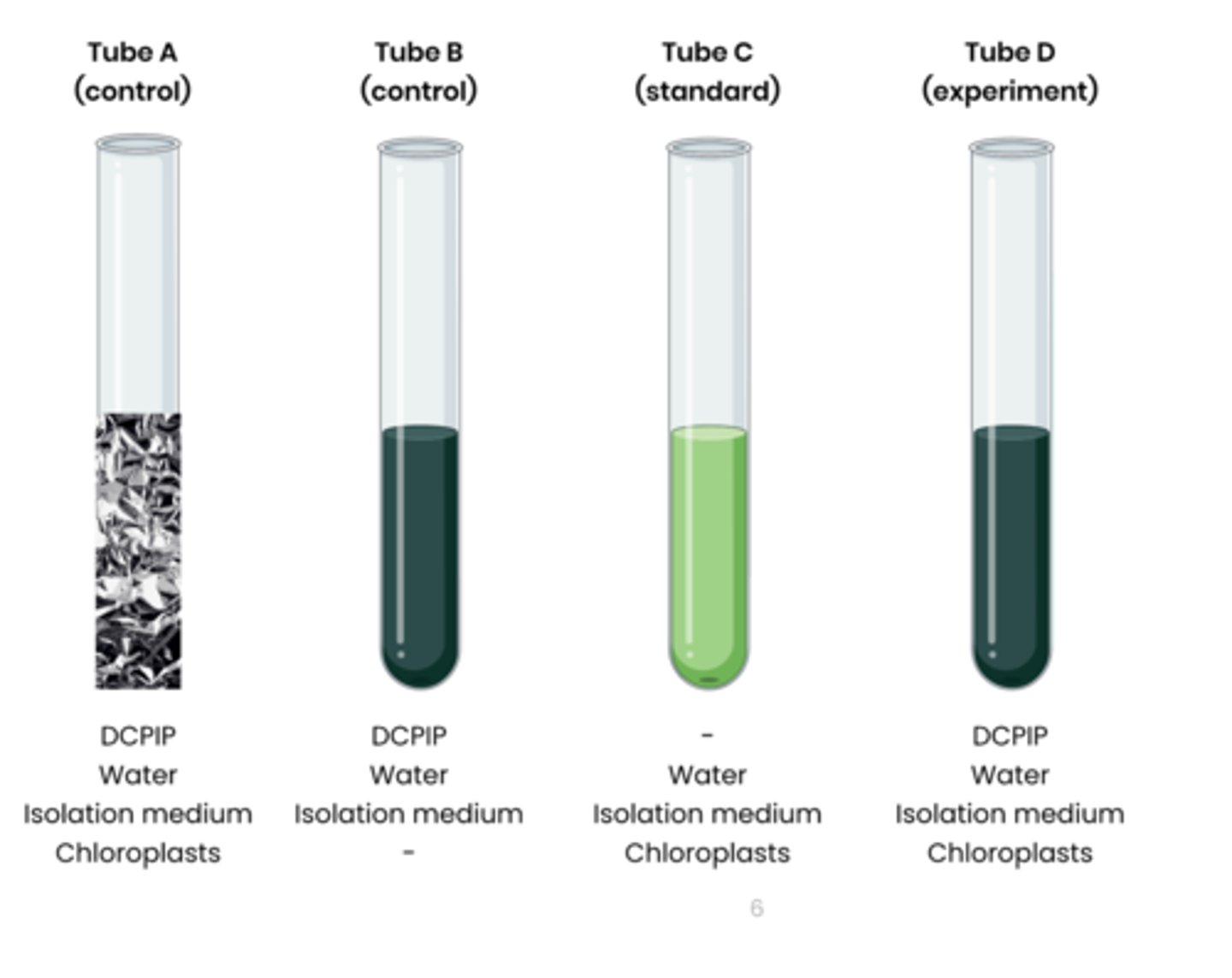
Explain the purpose of control 2 (tube B).
● Shows chloroplasts are required for DCPIP to decolourise
● Shows that light alone does not cause DCPIP to decolourise
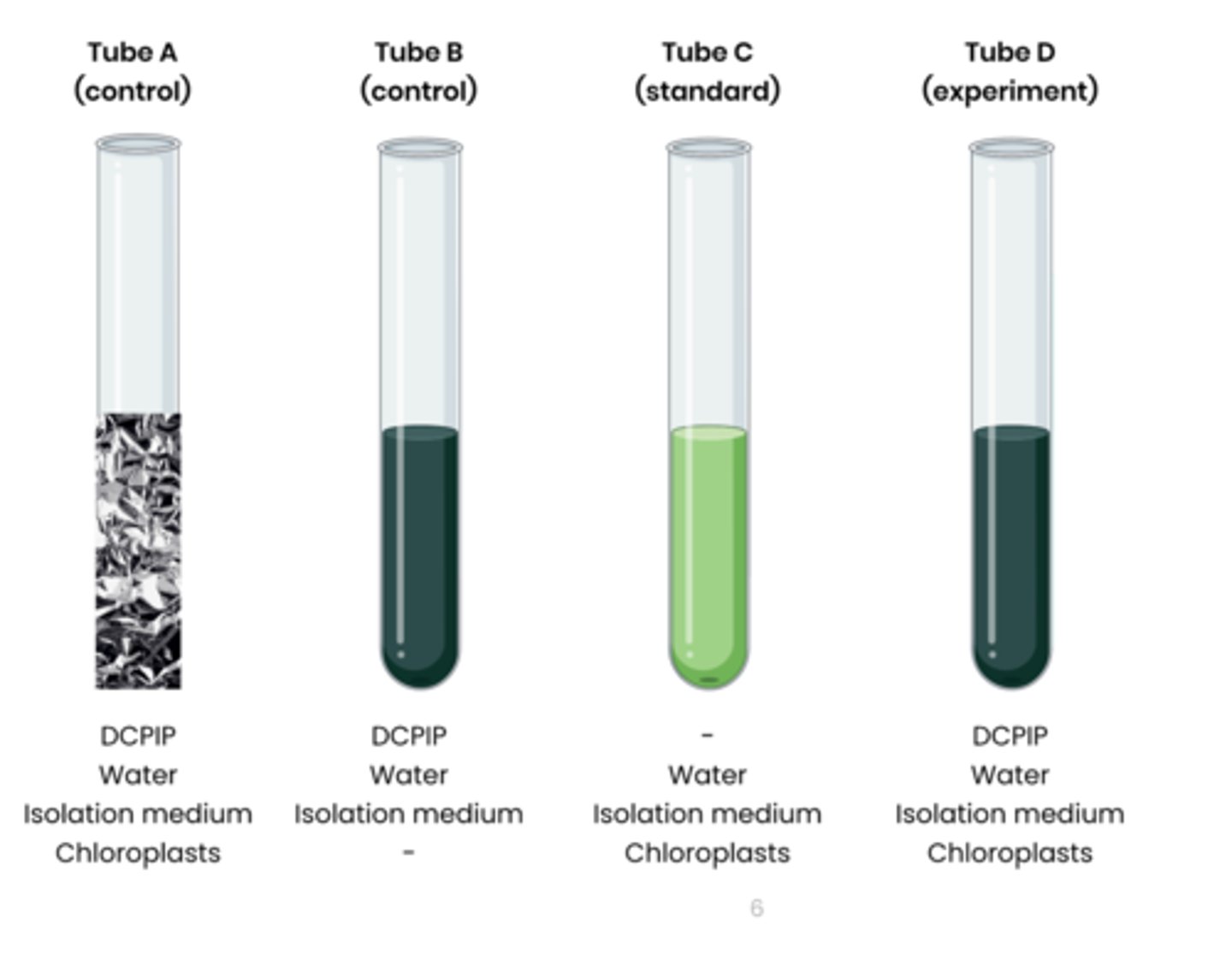
Explain why DCPIP changes from blue to colourless.
● DCPIP is a redox indicator / DCPIP gets reduced
● It accepts electrons from photoionisation of chlorophyll

Suggest a limitation with the method and how the experiment could be modified to overcome this
● End point (colour change) is subjective
● Use a colorimeter
● Measure light absorbance of sample at set time intervals
● Remember to zero colorimeter using the colour standard

Suggest why the midrib and leaf stalks are discarded
do not contain many chloroplasts

why is everything kept ice cold?
to reduce activity of enzymes that may damage chloroplasts
why is an isolation medium used?
- to help separate the organelles out
- may contain isotonic solution to prevent the entry of water by osmosis, leading to lysis of the chloroplasts
why may slightly damaged chloroplasts provide an advantage?
DCPIP can access the thylakoid membrane easier